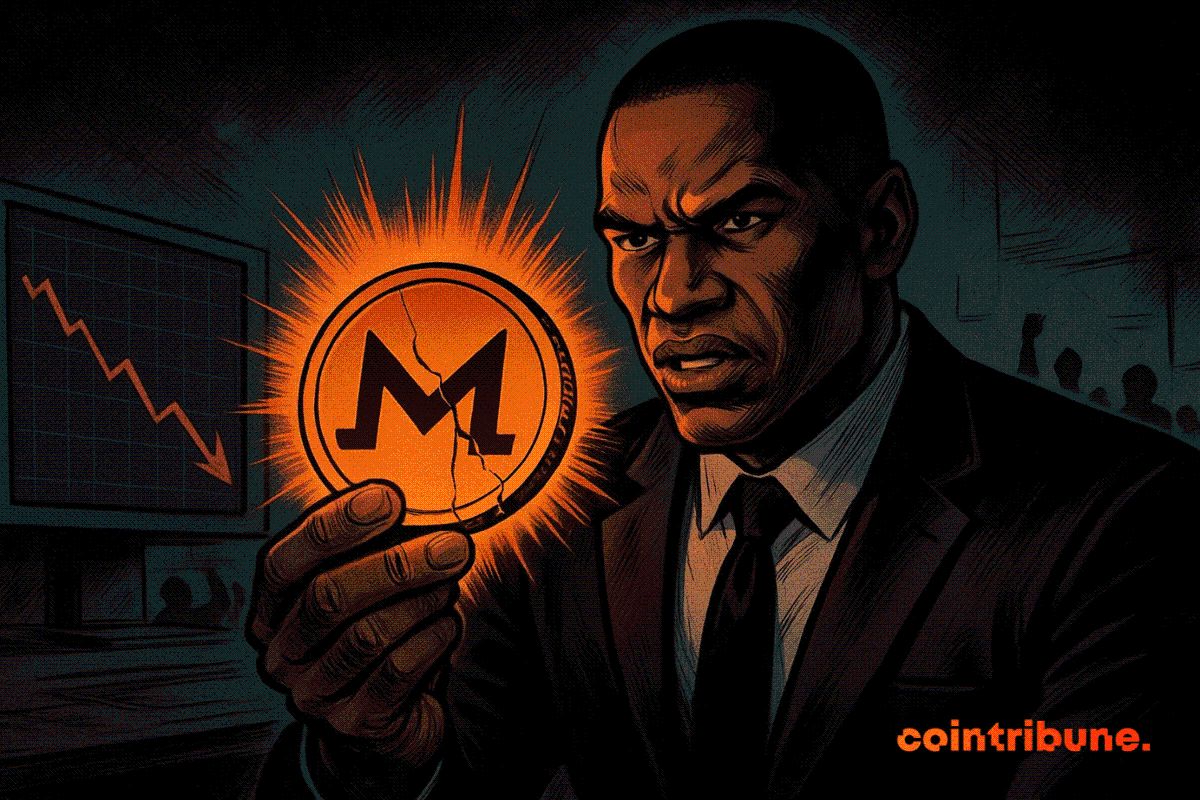WIF at $0.76: Institutional Buy-the-Dip vs. Futures Divergence – Is This the Precipice of a Breakout or Consolidation?
- Dogwifhat (WIF) tests $0.76 support as institutional buyers accumulate large spot orders, contrasting with declining futures volume. - On-chain data shows 47% surge in whale trades above $100k, suggesting long-term positioning despite weakening short-term momentum. - Futures RSI hits overbought levels while MACD contracts, signaling bearish divergence between spot strength and derivative fragility. - Investors advised to monitor $0.76 price action, futures open interest, and volume trends to determine br
The cryptocurrency market has long been a theater of contrasts, where institutional confidence and retail speculation collide. In August 2025, Dogwifhat (WIF) has become a focal point of this tension, with its price retesting the critical $0.76 support level. On-chain data and derivatives market dynamics reveal a stark divergence: while large holders are methodically accumulating WIF at key price points, futures volume and open interest suggest waning short-term momentum. This article dissects the interplay between institutional buy-the-dip activity and futures market signals to determine whether WIF is poised for a sustained bullish breakout or entering a consolidation phase.
Institutional Accumulation: A Measured Bet on Long-Term Value
On-chain analytics from platforms like CryptoQuant highlight a surge in whale activity in the spot market. Large holders are executing trades with order sizes far exceeding typical retail volumes, a pattern consistent with long-term positioning rather than speculative trading. For instance, spot average order size metrics show a 47% increase in trades above $100,000 since mid-August, indicating strategic accumulation. This behavior aligns with historical trends where institutional investors build positions during dips, often preceding extended uptrends.
The $0.76 level has historically acted as a psychological and technical floor for WIF. If this support holds, it could catalyze a rally, particularly if spot accumulation persists. Open interest (OI) in WIF futures has risen steadily, reflecting growing conviction among larger players. However, the recent decline in futures volume—a key indicator of leveraged momentum—raises questions about the sustainability of this bullish narrative.
Futures Divergence: A Warning of Short-Term Fragility
While spot markets tell a story of institutional confidence, the derivatives landscape paints a different picture. Futures volume has cooled, as evidenced by the Futures Volume Bubble Map, which shows a 32% drop in trading activity over the past two weeks. This divergence between spot and futures markets is a classic sign of technical uncertainty.
Technical indicators like RSI and MACD further underscore this split. The RSI for WIF futures has entered overbought territory (above 70), suggesting potential exhaustion in the short-term bullish trend. Meanwhile, the MACD histogram has begun to contract, signaling weakening momentum. These signals are often interpreted as bearish divergences, where price highs are not supported by corresponding strength in momentum indicators.
The Precipice: Breakout or Consolidation?
The current scenario presents a critical juncture for WIF. Institutional accumulation at $0.76 suggests a floor is in place, but the lack of futures participation implies that leveraged traders are hesitant to commit. This creates a tug-of-war between long-term positioning and short-term caution.
Historically, such divergences have led to consolidation phases, where prices trade sideways until a new equilibrium is reached. For example, in 2023, Bitcoin experienced a similar scenario at the $30,000 level, where spot accumulation by institutions coexisted with declining futures volume. The market eventually broke out after a three-week consolidation period.
Investors should monitor four key metrics:
1. Spot Whale Order Sizes: Continued large trades above $0.76 would reinforce institutional confidence.
2. Futures Open Interest: A rebound in OI could signal renewed momentum.
3. Futures Volume: Sustained declines may indicate a shift to consolidation.
4. Price Behavior at $0.76: A decisive close above this level could trigger a breakout.
Investment Advice: Positioning for Uncertainty
For long-term investors, the current price action at $0.76 offers a compelling entry point, provided spot accumulation continues. However, the mixed signals from futures markets warrant caution. A hedged approach—such as dollar-cost averaging into WIF while maintaining a portion of capital in cash or stablecoins—could mitigate risk.
Short-term traders, on the other hand, should avoid aggressive long positions until the divergence between spot and futures markets resolves. A breakout above $0.76 with a surge in futures volume would be a green light for bullish strategies, while a breakdown below this level could signal a deeper correction.
Conclusion: The Battle Between Bulls and Bears
WIF's journey at $0.76 is emblematic of the broader crypto market's duality. Institutional buyers are betting on a long-term bullish narrative, while futures market signals hint at short-term fragility. The coming weeks will be pivotal in determining whether this is the prelude to a breakout or the start of a consolidation phase. For now, patience and a balanced strategy remain the best tools for navigating this volatile landscape.
Disclaimer: The content of this article solely reflects the author's opinion and does not represent the platform in any capacity. This article is not intended to serve as a reference for making investment decisions.
You may also like
Can the 40 billion bitcoin taken away by Qian Zhimin be returned to China?
Our core demand is very clear—to return the assets to their rightful owners, that is, to return them to the Chinese victims.

Bitcoin Surges but Stumbles: Will Crypto Market Recover?
In Brief Bitcoin fails to maintain its position above $93,000 and faces heavy selling pressure. Altcoins experience sharp declines, with some showing mixed performance trends. Shifts in U.S. spot Bitcoin ETF flows highlight cautious investor behavior.

Qubic and Solana: A Technical Breakthrough by Studio Avicenne
